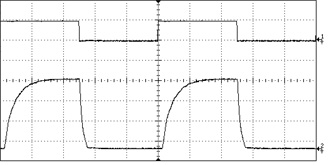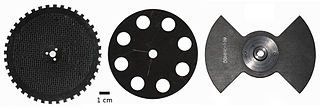Modulating Lasers

Whether the output from your laser is Constant Wave (CW) or Q-switched, it's possible that you may need to control the laser's behavior in some way. If you need to pulse or trigger the laser, or control the output power dynamically, then you require some form of modulation. Each modulation technique has its own benefits and drawbacks, so choosing the right type of modulation for your application is a critical step in designing your system.
Types of Laser Modulation

laboratory lasers
feature electronic modulation, which is built into the driver circuit. This type of modulation is the easiest to use because it requires little additional equipment. All you need is a function generator to produce the modulation signal. The electronic modulation circuit controls the power delivered to the laser diode, so it is directly turning the laser on and off. This type of modulation can also control the output power of the laser by reducing the electrical power delivered to the laser diode. The maximum response frequency of this type of modulation is usually around 30 kHz, though this varies by model and some may be lower. The two types of electronic modulation are TTL and analog.TTL:
Accepts a 0-5 VDC square-wave signal and can turn the laser on and off rapidly. Does not allow the user to adjust the power. The laser will pulse at full power.
Analog:
Accepts an arbitrary 0-5 VDC input signal. The laser's output power will track the amplitude of the input signal, within the limits of the maximum response frequency.
| Advantages | Disadvantages |
|
|
Optical Choppers

An optical chopper is usually just a rotating disc punctuated with holes or slits. As the disc rotates it periodically blocks the beam and pulses the laser at a fixed frequency. These usually include an electronic controller which allows for precise control of the rotational frequency of the disc. Since they are mechanical in nature, the maximum frequency is limited to the high kHz domain, due mainly to air resistance. The diameter of the laser beam also places some constraints on the size of the slits, and therefore the maximum pulse frequency is lower for larger diameter beams.
| Advantages | Disadvantages |
|
|
Optical shutters encompass a range of different devices which mechanically block or divert the laser beam. These can be in the style of guillotines, diaphragms, irises, LCD elements, or even a rotating mirror which redirects the beam. The common feature which sets them apart from choppers is that each event is individually triggered. You can open a shutter for an arbitrary amount of time and then close it again. Some of them have variable speed, so you can adjust the rise/fall time to some extent. Others can be made to open only partway, allowing for some degree of power control. This is a very broad category, so there is a lot of variability, but they are all mechanical systems and are therefore limited to some extent by their physical components.
Arktis Laser offers a shutter system with a maximum modulation frequency of 100 Hz, which is specifically designed for optogenetics. See our modular optics kits for full details.
| Advantages | Disadvantages |
|
|

An acousto-optic modulator (AOM, also sometimes called a Bragg cell), is a device which can pulse the laser or alter the transmitted power at a very high frequency. Basically, they function by sending the laser beam through a crystal which is subjected to acoustic vibrations. These vibrations alter the refractive index of the material, so the beam can be redirected from the output aperture to a beam dump in an incredibly small amount of time. The rise/fall time is limited only by the amount of time it takes for the acoustic wave to traverse the width of the crystal, so this is usually on the order of nanoseconds. An AOM can modulate a laser with essentially any arbitrary input waveform, with a response frequency in the MHz domain. They can be mounted in free-space or installed inline with fiber.
| Advantages | Disadvantages |
|
|
An electro-optic modulator (EOM, also sometimes called a Pockels cell) is similar to an AOM except that it uses an electric field rather than an acoustic wave in order to change the optical properties of the material inside. The Pockels cell inside the EOM alters the polarization state of the beam, and a polarizer is used at the output to convert this change in polarization to a change in amplitude. Because the device uses electric fields rather than mechanical acoustic waves, it can operate faster than an AOM. Commercial models are available with a maximum frequency of up to 200 MHz.
| Advantages | Disadvantages |
|
|